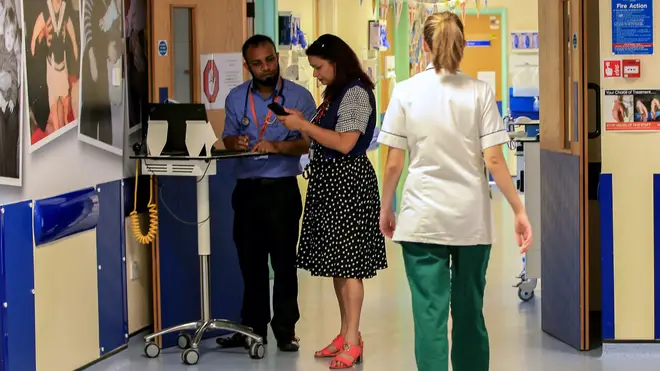
Tom Swarbrick 4pm - 7pm
7 September 2021, 18:24

£36bn will be invested over the next three years to help the NHS recover from the coronavirus pandemic and reform adult social care.
The Government has set out its plans for the biggest catch-up programme in the history of the NHS in England and an overhaul of the social care sector.
– What has been announced?
The Government has pledged to invest £36 billion over the next three years to help the NHS recover from the coronavirus pandemic and reform the adult social care system so people no longer face catastrophic care costs.
The majority will go to the NHS, with social care receiving £5.3 billion over the next three years.
From October 2023, nobody will pay more than £86,000 for their social care – regardless of their assets.
The Government will fully cover the cost of care for those with assets under £20,000, and contribute to the cost of care for those with assets of between £20,000 and £100,000.
Today we have set out a plan to tackle the COVID-19 backlog and reform social care.
Read more about our plan 👇
— Department of Health and Social Care (@DHSCgovuk) September 7, 2021
– Why is this happening?
The NHS waiting list is at an all-time high as the nation recovers from the coronavirus pandemic.
The social care sector has been in need of substantial reform for years, and workforce and sustainability issues have been exacerbated by the recent crisis.
– How will it work?
It will be funded through a UK-wide health and social care levy from April 2022, based on national insurance contributions paid by working adults.
Between 2022 and 2023 national insurance rates will rise by 1.25 percentage points. From April 2023, the levy will appear as a separate entry on individuals’ pay slips. It is at this point that working adults above pension age will chip in.
The Government is also increasing the rate of dividend tax by 1.25 percentage points to ensure people who receive income from dividends make the same contribution.
– How much will I have to pay?
Those who earn more will pay more, Prime Minister Boris Johnson has said.
For example, a basic rate taxpayer earning £24,100 will contribute £180 a year and a higher rate taxpayer earning £67,100 will contribute £715 a year.
WATCH LIVE: Prime Minister @BorisJohnson makes a statement on Health and Social Care to the @HouseOfCommons . https://t.co/TxG03B8IhU
— UK Prime Minister (@10DowningStreet) September 7, 2021
– How will the NHS benefit?
Most of the money in the first three years will go towards the NHS, and is expected to fund an extra nine million checks, scans and operations, as well as help the NHS focus on innovation.
– What about social care?
Social care will receive £5.3 billion between 2022-23 and 2024-25.
Less than half of this will fund the minimum floor and cap.
Around £500 million will go towards workforce training and skills, including 700,000 new training places, while money will also go towards increasing local authority payment rates, integration and quality.
The Government has not provided a full breakdown for the money.
– When will social care get the money?
The social care sector will receive some of the extra money in the next financial year and throughout the three-year window.
But more money will be diverted to the sector after the three years as people hit the cap.
It is unclear how much more money the sector will receive at this point.
– What about Scotland, Wales and Northern Ireland?
The devolved nations will receive an additional £2.2 billion in extra health and social care spending from the levy.
– What now?
MPs will be asked to authorise the creation of a health and social care levy on Wednesday.
The Government will begin its consultation on social care charging reforms in October.
It will also publish the NHS funding settlement, delivery plan for tackling the backlog, a White Paper for reforming social care and the plan for integration later this year.